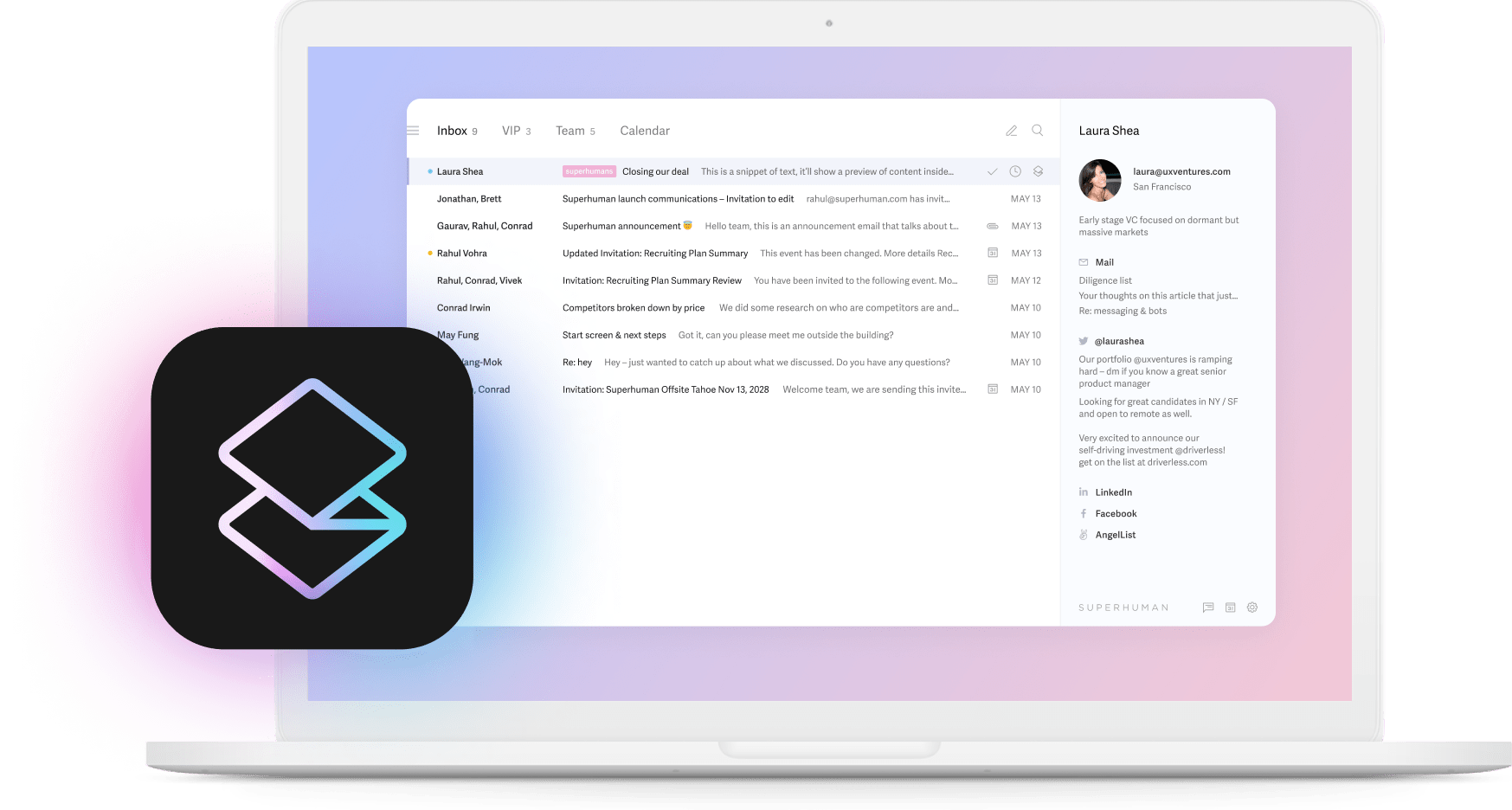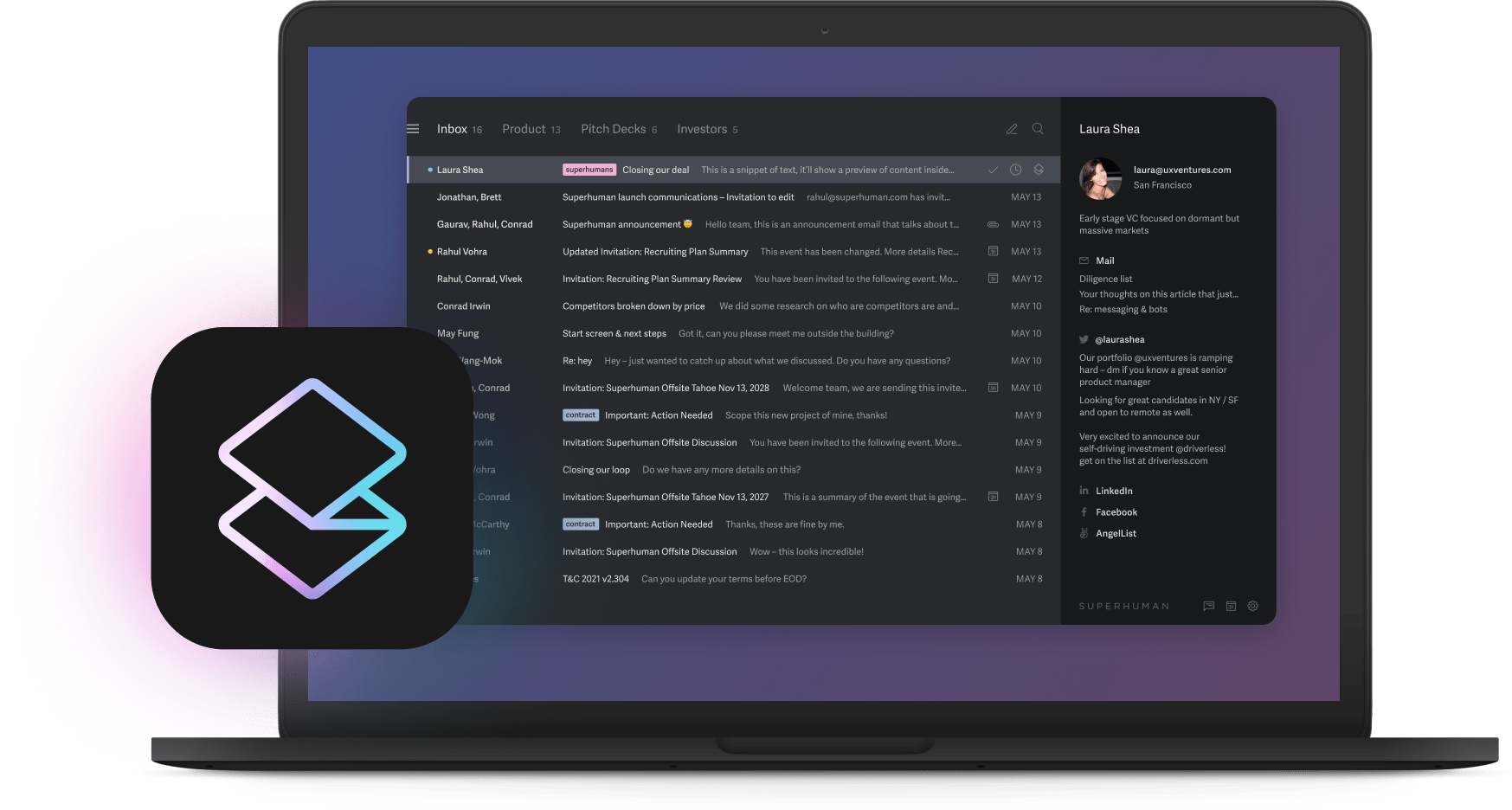
Email doesn't have to be a black hole for productivity. Here's something interesting, though: most people think artificial intelligence communication means robots writing soulless emails. But the opposite is true. The best AI tools learn your voice, handle the boring parts, and free you to focus on relationships that matter.
When teams get this right, something amazing happens:
• Your inbox becomes manageable because AI sorts urgent from noise automatically
• Decisions happen faster when AI keeps everyone aligned without meetings
• You sound like yourself while writing emails in half the time
• Hours come back instead of disappearing into communication overhead
The first step? Fix your inbox setup.
AI helps you set up your inbox for peak performance
Think about the last time you opened your email. How long did it take to figure out what needed attention first? Most people waste 20 minutes every morning just sorting through messages.
But, smart AI tools watch how you handle email and learn what deserves immediate attention. They're like having an assistant who knows your priorities better than you do.
The setup is simple. Connect your email and let Superhuman's AI read your last 30-90 days of messages. This teaches it your patterns. Who do you reply to within minutes? What emails do you delete without reading? Superhuman's AI picks up these habits faster than you'd expect.
Turn on Auto Summarize and keyboard shortcuts immediately. Split Inbox automatically categorizes emails to spotlight high-priority messages from colleagues and executives. Auto Labels help you prioritize what matters most by automatically organizing your inbox.
Watch out for these traps:
Setting filters too aggressively at first. Superhuman's AI needs time to understand what's truly important. If it starts hiding emails from new clients, dial back the sensitivity settings.
Forgetting email authentication. Missing SPF/DKIM configurations make legitimate emails look like spam to Superhuman's AI filters.
Ignoring privacy settings. These tools read everything in your inbox, so review what data they store and where.
The challenge? Keeping communication human while letting Superhuman's AI handle mechanics. As security experts note, companies need robust data security when AI accesses sensitive information.
For sensitive communication: Choose AI tools that meet your security requirements and implement proper data governance policies.
AI helps you speed up team collaboration
Remember the last time your team tried to make a decision over email? Probably involved 15 people, 30 messages, and three meetings to clarify what everyone meant.
Shared Conversations let teams discuss emails directly within conversations, streamlining decision-making instead of copying information from email to Slack to your project tool. Read Statuses show exactly when messages are opened, making follow-ups more effective.
Real-time translation built into these platforms means global teams can communicate without language barriers. Superhuman's AI preserves tone and context while handling translation.
AI helps you write like yourself, only faster
The best AI writing tools don't make you sound robotic. They learn how you communicate and help you do it faster. Write with AI analyzes messages you've sent to specific recipients before and matches your tone and voice to them. These tools learn over time from your writing, not from corrections.
Here's how to train AI to capture your voice:
Feed it examples: Upload 10-15 of your best emails from different situations. Client communications, internal updates, executive briefings. More variety helps Superhuman's AI match your voice to each situation.
Let it learn context: Superhuman's AI should consider who you're writing to and how you've communicated with them before. You probably write differently to your CEO than to your team.
Review and refine: For the first month, edit AI suggestions. This teaches the system your preferences and improves future outputs.
Use this checklist for every AI-generated email:
- Tone: Does this sound like me?
- Relevance: Does it address what they said?
- Usefulness: Are the next steps clear?
- Sensitivity: Is the tone right for this relationship?
- Timing: Am I responding quickly enough?
Examples of AI-assisted responses:
Polite decline: "Thanks for thinking of me for this. My current commitments won't let me give this the attention it deserves, but I'd be happy to connect you with [alternative resource]."
Executive summary: "Key decision needed: Budget approval for Q2 marketing campaign ($50K). Three vendor proposals attached. Recommendation: Vendor B offers best ROI with 2-week faster delivery."
Follow-up without pressure: "Wanted to circle back on our partnership discussion. Happy to jump on a quick call this week to address any questions from your team review."
Get started in 5 minutes: fix your inbox today
Why do some people seem to have email under control while others drown? The secret is AI email sorting tools like Superhuman that put important messages first based on sender, content, and your response patterns.
Quick setup:
- Turn on automatic sorting in your email platform to categorize important messages
- Set up filters for colleagues, executives, and business tools like Google Docs, Asana, and Slack notifications
- Enable Instant Reply so you can respond to routine emails faster with AI-generated suggestions
Teams using AI email tools save time weekly after activating intelligent sorting. AI automating repetitive tasks and integrating communication channels works across companies of all sizes.
Common mistakes and how to avoid them
Automating too much, too fast
AI excels at pattern recognition but fails at reading between the lines. Keep human oversight for sensitive communications, major decisions, and relationships where a personal touch matters.
How to fix it: Set up manual review for high-stakes emails and configure Superhuman's AI tools to flag unusual situations for personal handling.
Ignoring privacy rules
GDPR and similar laws require explicit consent before AI tools process personal communications. Data processing rules are getting stricter, not looser.
How to fix it: Build privacy protections from the start. Set up automatic data deletion, clear retention policies, and easy opt-out options for email contacts.
Training AI on biased data
Poor training data can make AI perpetuate unfair patterns, especially in hiring, performance reviews, or customer service.
How to fix it: Regularly audit the AI outputs for bias. Keep training data diverse and set up human review checkpoints for sensitive communications.
Losing momentum after initial excitement
Teams often get excited about AI tools, then abandon them when the novelty wears off. Training and change management determine whether tools stick or get forgotten.
Quick fix: Schedule monthly team sessions to share what's working, troubleshoot problems, and explore new features that fit your workflows.
What's coming next in AI communication
The next wave of AI communication tools will handle complex multi-step communications without human input. We're talking about AI agents that negotiate meeting times, draft project updates, and handle customer complaints from start to finish.
What to watch for:
Emotion detection will let AI tools like Superhuman adjust email tone based on whether recipients seem stressed, excited, or confused. This could prevent many miscommunications before they happen.
Multi-format AI will combine text, voice, and visual analysis for better context understanding. Imagine Superhuman's AI looking at a screenshot you send and automatically drafting a detailed response.
Communication optimization using digital twins will let companies test email strategies before sending them, reducing the risk of tone-deaf messages.
The future belongs to teams that master artificial intelligence communication while keeping the human element that builds real relationships. Those who get this balance right won't just save time, they'll outpace competitors who are still drowning in their inboxes.





